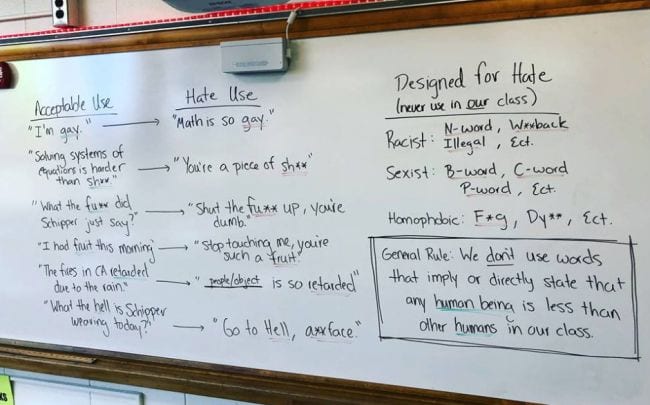Introduction:
In today’s world, where profanity can be heard almost every day on the streets, it is not surprising that cursing has made its way into the classroom. While some educators may overlook these incidents, others are unsure about how to properly address this inappropriate behavior. In this article, we will discuss various strategies that can be employed by teachers when dealing with cursing in the classroom.
1. Determine the Severity of the Profanity
Before reacting to an offensive word or phrase, take a moment to determine its severity. For example, differentiate mild expletives from more aggressive ones, especially those charged with hate speech or derogatory language.
2. Establish Clear Classroom Expectations and Consequences
At the beginning of each term, establish a clear set of rules related to classroom behavior, including language. Ensure all students understand what type of language is unacceptable and what consequences might arise if they engage in such behavior.
3. Address the Issue Immediately
When you encounter profanity in your classroom, addressing it promptly is crucial. Ignoring the issue can signal to other students that such behavior is acceptable – which is not the case. Therefore, make sure to confront the student promptly if they use inappropriate language within your classroom.
4. Give Context and Explain Why it’s Inappropriate
Instead of merely reprimanding a student for their use of profanity, provide context for why their choice of words was inappropriate. Discuss how their actions affect fellow students and may create a negative learning environment.
5. Redirect Conversational Flow
When a student drops an offensive word casually during class discussion, redirect them instead of focusing on their indiscretion. Try steering them back to the topic at hand and discouraging further use of such language by emphasizing civility in conversation.
6. Employ Private Conversations
To avoid embarrassing or singling out a student in front of their peers, consider taking them aside to discuss their use of profanity privately. Calmly, and without scolding, express your concerns and the reasons for such behavior being unacceptable in the classroom.
7. Encourage Alternative Expressions
Help students develop better ways to express themselves when they’re frustrated or upset. Encourage them to use alternative words or phrases to better communicate their emotions or feelings without resorting to foul language.
8. Involve Parents or Guardians
If a student continues to use inappropriate language despite your efforts to address the issue, consider involving the student’s parents or guardians. Discuss your concerns with them and work together on strategies that may help prevent this behavior in the future.
Conclusion:
Dealing with cursing in the classroom is a challenge, but it’s essential that teachers take appropriate action as it arises. By establishing clear expectations, addressing the issue promptly and fairly, and fostering an environment of respect and civility, educators can minimize cursing and create a positive learning atmosphere for all students.

